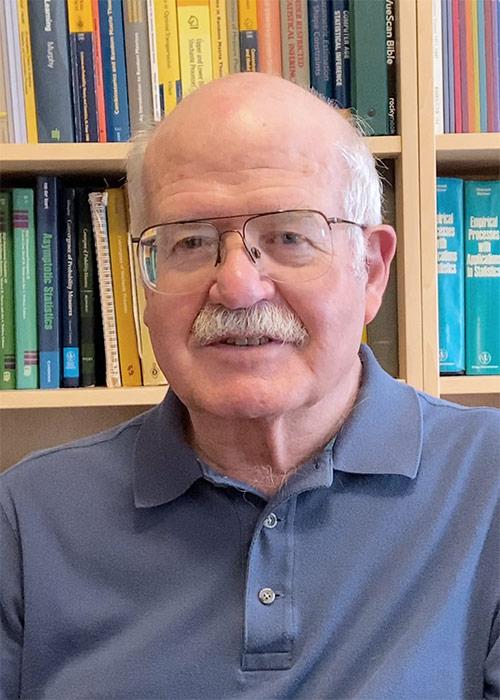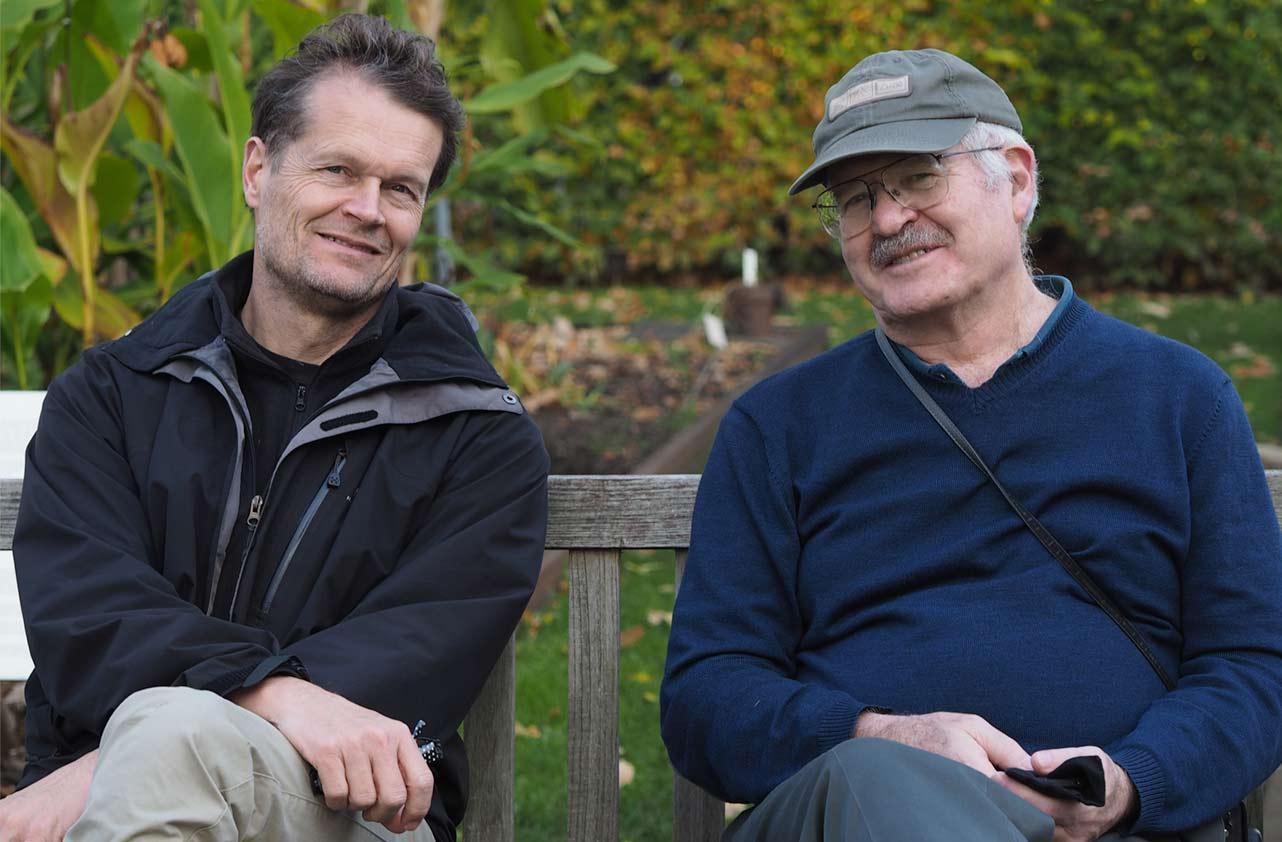
Jon Wellner has influenced generations of statisticians through his research, teaching, and mentoring.
But statistics wasn’t an immediate interest for Wellner.
In high school, he spent more time skiing than thinking about college, and when it came time to select an undergraduate program, he followed in his research forester father’s footsteps. Eventually, courses in mathematics sparked his interest and he pivoted his focus to math and physics. After a stint in the U.S. Army, Wellner began his graduate studies at the University of Washington in an inter-disciplinary program in biomathematics (which included biostatistics).
Wellner would later return to UW to be a professor in both the Department of Biostatistics and of Statistics. He retired last month, after 37 years at UW.
Over the course of his academic career, Wellner’s research has centered around uses of large sample theory in statistics, theory of empirical processes, statistical inference under shape restrictions, and efficient estimation for semiparametric models.
One of his most notable publications focuses on efficiency theory for semiparametric models, which are used every day in biostatistics. Semiparametric models include both finite-dimensional parameters, which are easier to estimate, and infinite-dimension parameters, sometimes called nuisance parameters, that are more difficult to estimate.
His most cited work, “Weak Convergence and Empirical Processes,” co-authored with Aad van der Vaart, is standard issue for many mathematical statisticians and theoretical methodologists.

“We had the good fortune of writing the book at an opportune time, when the theory had developed to a point where quite a bit was known, but there also remained quite a few open problems,” says Wellner
Wellner goes on to describe his work as being at the interface of probability and statistics, “The freedom to go back and forth between parts of probability theory and statistics has been very important to me. I have enjoyed being able to spend time learning different bits of probability theory and using them to help address statistical problems.”
In recognition of his work, Wellner has been named a fellow of the Institute of Mathematical Statistics, the American Statistical Association, and the American Association for the Advancement of Science. In 2010, he was made a Knight of the Order of the Netherlands Lion, a result of his many research collaborations with Dutch scientists.
Norman Breslow, a pioneer in the field of modern biostatistics and former chair and professor of the department of biostatistics, was another of Wellner’s collaborators. The two shared research interests as well as a passion for backcountry skiing, climbing, and mountaineering.
“Our collaborative scientific work began when Norm got me interested in two phase designs and the resulting statistical issues arising in connection with these designs and semiparametric models. Between 1995 and 2015, we wrote five or six papers on this topic, and my interest in this area has continued since Norm’s death in 2015,” says Wellner.
Wellner and Breslow were part of a ski-mountaineering community, that regularly ventured into the Pacific Northwest backcountry and beyond.
“Norm organized trips to Nepal in 1989, 1996 and 1999. In between, Norm and I did quite a lot of climbing together, including successful climbs of Sloan, Columbia, Formidable and Fernow,” says Wellner, who was also part of the Mountain Rescue Team in Seattle for many years. He also notes that lots statistical discussions happened during these trips that, occasionally, lead to useful insights.
Wellner lists his work with students as his most satisfying achievement. He claims more than 100 academic “children and grandchildren” as a result of advising 31 PhD students.
“Supervising PhD students has been both rewarding and challenging. Every student is different, so the trick is to try to find the right match between the student and the problem. I have been fortunate in having supervised a number of very strong and creative students. And it is often the case that I end up learning more from them than they learn from me!”
Wellner has also touched the lives of many students through the statistical theory sequence, series of courses for students in the departments of Biostatistics and Statistics that he has taught frequently since he came to UW.
As much as Wellner has accomplished, he notes there is still much to be done.
“As a discipline or field, statistics is still fairly young, and it has indeed changed quite a lot during the span of my career. The primary driver of this has been the enormous changes in computing power, which have occurred over that time span. Statistics clearly needs to keep working to not only provide new methods for the many new applications arising in various fields of science, but also ways of understanding the properties of the new methods. This is likely to require quite a lot of new mathematics as well as new statistics and new ways of organizing statistical theory to tackle the new problems.”
After leaving the UW, Wellner plans to continue skiing and climbing, to get back to an old hobby, photography, and, perhaps, write one more book.
Additional reading:
- Benerjee, M., Samworth R. (2018). A Conversation with Jon Wellner.
Deb Nelson, Biostatistics communications and event manager